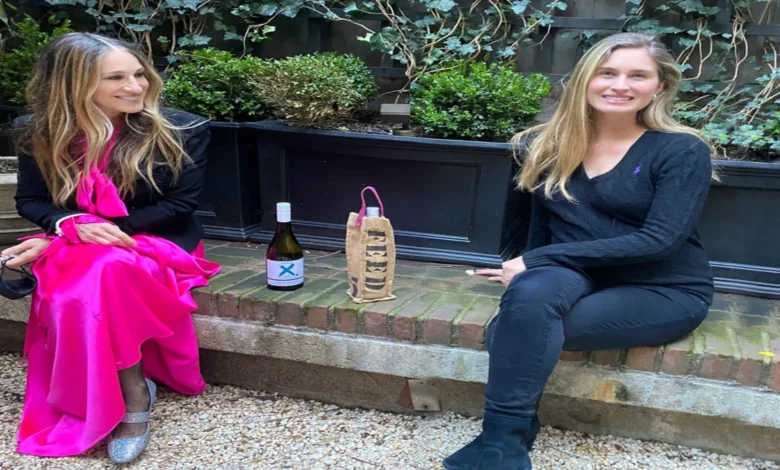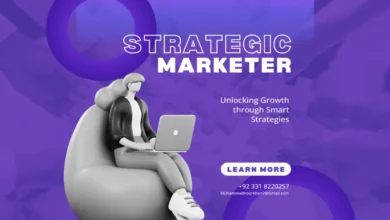Who Owns the FEED Foundation?

Who Owns the FEED Foundation? The question “who owns the FEED Foundation?” isn’t just a curiosity it’s tied to the deeper mission of a movement that has reshaped how people think about giving back. The FEED Foundation is more than a name; it’s a powerful symbol in the world of philanthropy and sustainable consumerism. If you’ve ever purchased one of those minimalist canvas bags with the big “FEED” print on it, you’ve already been part of this movement. But who owns this nonprofit powerhouse? And how did it evolve into such a recognizable force in fighting global hunger?
While many believe the FEED Foundation to be just a fashionable offshoot of some larger charity conglomerate, the truth is much more grounded and personal. It is the brainchild of a visionary who blended style with substance in a way that the world hadn’t quite seen before. So, let’s uncover the story behind the brand, dig deep into who owns the FEED Foundation, and explore why this ownership matters.
Understanding the FEED Foundation’s Mission and Identity
Before diving into who owns the FEED Foundation, it’s essential to grasp what the foundation stands for. At its core, the FEED Foundation is dedicated to combating hunger and malnutrition around the world. With a model that intertwines fundraising, awareness, and consumer activism, the foundation’s goal is simple: to feed as many children as possible.
The organization doesn’t operate like a traditional charity. Instead, it works hand-in-hand with its sister social enterprise, FEED Projects, to fund hunger-relief programs in both domestic and international communities. Each product sold through FEED Projects directly contributes to providing meals to those in need, with the exact number of meals provided stamped on the product.
This hybrid model blending a foundation with a retail brand has become a pioneering example of how modern philanthropy can look, which leads many to wonder: who owns the FEED Foundation, and how did such a powerful idea come to life?
The Founder Behind the FEED Foundation
To truly answer who owns the FEED Foundation, you have to start with the woman who brought it into existence: Lauren Bush Lauren. She’s not just a founder she’s the driving force behind the concept, the vision, and the mission. As the granddaughter of former U.S. President George H. W. Bush and niece of President George W. Bush, Lauren could have taken a more conventional path. Instead, she used her platform to advocate for global food security.
After serving as an Honorary Student Ambassador for the UN World Food Programme, Lauren was struck by the stark realities of hunger around the world. She didn’t just want to talk about it she wanted to create something tangible. That something became the FEED Foundation and its sibling company, FEED Projects.
So, when people ask who owns the FEED Foundation, it’s not a corporation or a hidden board of directors. It’s Lauren Bush Lauren who co-founded and shaped this mission from the ground up, and though the foundation itself operates under a nonprofit model (and therefore isn’t owned in the traditional sense), her influence is foundational and ongoing.
The Structure of Ownership: What It Means
Now let’s address the nuance of the question: Who owns the FEED Foundation? Since it’s a registered nonprofit organization, the foundation isn’t “owned” like a private business or product line. Nonprofits function with boards of directors and executive leadership rather than shareholders or private owners. However, the founder’s vision and oversight often play a massive role in shaping the direction and sustainability of the organization.
Lauren Bush Lauren serves as the chair of the board and remains integrally involved in the decision-making processes. While legally the FEED Foundation isn’t owned by her or any one individual, she is undoubtedly the face, the spirit, and the architect behind everything the foundation does. So, when someone wonders who owns the FEED Foundation, the answer lies somewhere between legal technicalities and visionary leadership.
Additionally, the FEED Foundation is structured to work with trusted on-the-ground partners like the United Nations World Food Programme and No Kid Hungry. These collaborations further show that while there isn’t an “owner,” there is a network of carefully chosen alliances that make its work possible.
The FEED Projects Connection
It’s impossible to talk about who owns the FEED Foundation without bringing up FEED Projects the for-profit social enterprise that supports the foundation’s mission. FEED Projects is also co-founded by Lauren Bush Lauren and is best known for its stylish, sustainably made accessories. Every purchase directly translates into meals donated, with proceeds often directed through the FEED Foundation.
This dual-entity model where one part is nonprofit and the other is for-profit blurs the traditional lines of ownership. But it also exemplifies a growing trend in philanthropy: using business as a vehicle for change. The success of FEED Projects helps fuel the foundation, yet each operates independently with its team and governance.
So, while Lauren Bush Lauren doesn’t technically “own” the FEED Foundation, she owns and leads FEED Projects and leverages its success to empower the foundation’s efforts. It’s a seamless collaboration between passion, purpose, and sustainable business practices.

Why Ownership Matters in Nonprofits
You might wonder: Why does it matter who owns the FEED Foundation? In the world of nonprofits, transparency and accountability are crucial. Knowing who is behind an organization gives donors confidence, builds trust, and reinforces the mission. When a foundation is run by someone with genuine passion, hands-on experience, and a strong moral compass, it shows in everything the organization does.
In this case, Lauren Bush Lauren’s long-term involvement and dedication to the cause provide clarity. Unlike many charity models that suffer from disconnected leadership, the FEED Foundation benefits from the continuity and authenticity of a founder who lives and breathes the mission. This not only strengthens public trust but also ensures long-term impact.
So, while the question “who owns the FEED Foundation” might not have a simple one-line answer, its implications are vast and deeply rooted in how modern philanthropy can and should function.
The Impact of Purpose-Driven Leadership
If there’s one major takeaway from exploring who owns the FEED Foundation, it’s that strong, purpose-driven leadership can shape an organization in extraordinary ways. The foundation’s impact is a direct result of the clarity of its mission and the passion of its founder. The meals provided, the communities uplifted, and the awareness raised all trace back to leadership that is engaged, intentional, and relentlessly motivated.
Lauren Bush Lauren’s story also shows how blending fashion, business, and activism can create a legacy. Through her efforts, she has made it possible for everyday people to be part of a global movement, just by making a purchase. That’s powerful. And while she may not legally “own” the foundation, she owns its vision, its voice, and its heart.
How the FEED Foundation Continues to Grow
Another angle to consider when exploring who owns the FEED Foundation is how it sustains and evolves. Growth in the nonprofit sector often depends on more than just donations it relies on community engagement, effective partnerships, and dynamic leadership. The FEED Foundation has embraced all of these elements.
Over the years, the foundation has expanded its work to focus on local hunger issues in the U.S. alongside global efforts. It also continuously adapts its fundraising models, using events, collaborations, and digital campaigns to maintain momentum. This kind of growth doesn’t happen in a vacuum; it’s guided by a steady vision one that’s tied to its founder.
This brings us back to the heart of the question: Who owns the FEED Foundation? While the technical answer may be “no one,” the real answer lies in the stewardship of someone who continues to innovate and inspire through action.
Public Perception and Brand Trust
One of the most compelling aspects of the FEED Foundation is its brand identity. People trust the foundation because they associate it with honesty, impact, and transparency. And that’s no accident. A huge part of this brand trust stems from the answer to who owns the FEED Foundation or more accurately, who leads it.
Leadership rooted in experience, empathy, and credibility creates a ripple effect. Consumers feel good buying from FEED Projects because they know their money is going toward something real. Donors feel confident giving to the FEED Foundation because it’s not just a faceless organization; it’s a movement with a well-known and respected figure at the helm.
Challenges and Criticisms
Even with all the good it does, the FEED Foundation isn’t immune to criticism. Some critics question whether social enterprise models dilute the mission of nonprofit work. Others challenge the transparency of how funds are allocated. When people dig deeper into who owns the FEED Foundation, they also want to know how decisions are made, who oversees them, and whether the organization is accountable.
This kind of scrutiny is healthy. And the FEED Foundation has responded by being open about its partnerships, its meal calculations, and its impact reports. Again, strong leadership helps here. When the face behind an organization is visible, accessible, and credible, it reinforces confidence even amid tough questions.
Final Thoughts: Ownership Beyond Titles
By now, the answer to who owns the FEED Foundation should feel more like a story than a statement. It’s a story about how one person’s vision can ripple across the world, feeding millions and sparking change. It’s about how ownership, in the nonprofit world, doesn’t always mean legal control, but it often means accountability, leadership, and legacy.
Lauren Bush Lauren may not “own” the FEED Foundation in the traditional sense, but she undeniably owns the mission, the message, and the movement.
So the next time you carry a FEED bag or donate to a hunger relief effort through the foundation, remember: you’re participating in something that was built with purpose, sustained through passion, and guided by someone who truly cares about the answer to the question: Who owns the FEED Foundation?






